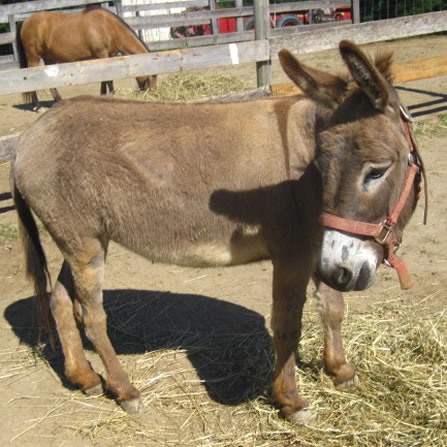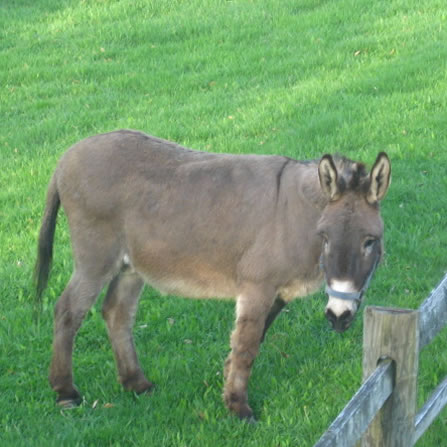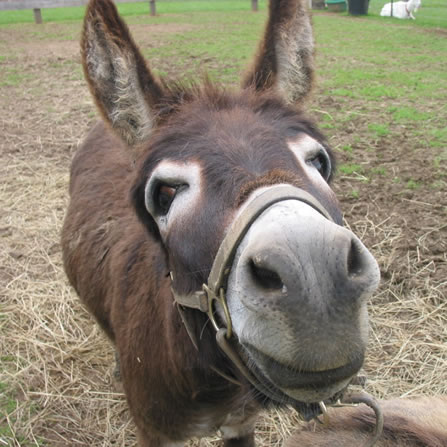Donkey FactsAbout the animals at Clark's Elioak Petting Farm



Donkeys
Buddy is a Miniature Donkey. He is 8 years old and is very friendly. His best friend is the pony who lives next to him, Arlo.
Buddy has a raspy, brassy voice: Aw-EE, Aw-EE! He can be very loud at feeding time. Buddy has coarse grey hair and large ears. Be careful to keep your fingers away from his mouth. He might think they are tasty carrots.
FUN FACTS ABOUT DONKEYS
Christopher Columbus brought the first donkeys to the new world in 1495.
Donkeys come in many coat colors, but most are gray with light muzzles and eye "rings". They all have long dark eye lashes. Some donkeys have a cross on their backs
The mane and tail of the donkey are coarse. The mane is stiff and upright, rarely laying over, and the tail is more like a cow's, covered with short body hair for most of the length, and ending in a tasseled switch. Donkeys do not have a true forelock, although sometimes the mane grows long enough to comb down between the ears toward the eyes. Because the mane is stiff and sometimes flyaway, many donkeys, especially show stock, wear their manes clipped short or shaved close to the neck.
Donkeys ears are MUCH longer in proportion to their size than a horse's. They have straighter necks and lack a true wither. Their back is straighter due to the lack of withers and their rump, or hind end, is less rounded and muscled.
Donkeys are used as guardians for sheep, companions for horses, farm work and riding.
Donkeys have many wild cousins that live in the western part of the U.S. The word "burro" is used west of the Mississippi and the word "donkey" is used to the east.
The ass was domesticated by the Egyptians about 4000 BC; it is more surefooted than the horse, which makes it better on mountain trails. It also lives longer than the horse—generally from 25 to 50 years. The African wild ass can run up to 50 km/h (up to 30 mph).
In the United States the donkey has been used as a beast of burden and for the breeding of mules, which are hybrids produced by mating mares (female horses) and jackasses (male donkeys). Small donkeys, or burros, played a major role as pack animals in opening up the western United States.
Information provided courtesy of the American Donkey and Mule Association.
